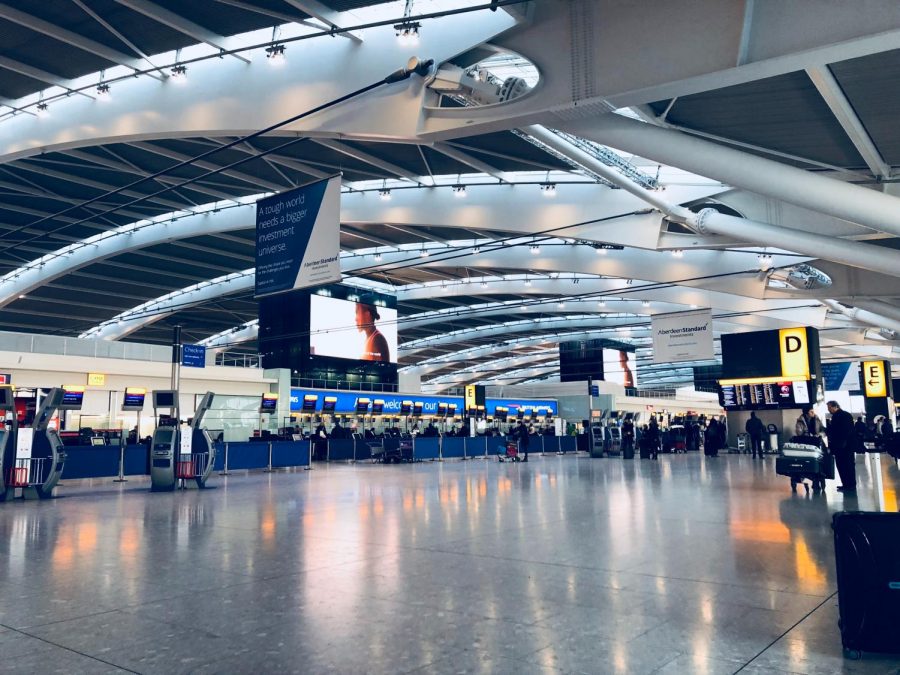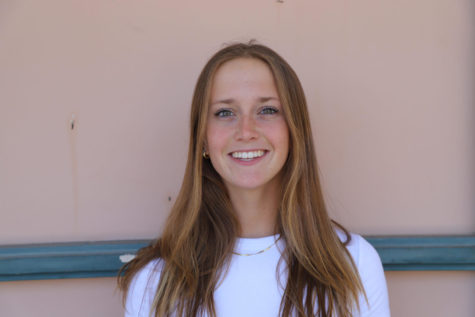Traveling During the COVID-19 Pandemic
October 22, 2020
You walk through the familiar airport, eyes wandering to the vendors selling much-needed caffeine and snacks, and the echo of the loudspeaker fills your ears. But something seems different. The smell of disinfectant stings your nose and as you move to adjust your mask, avoiding social interaction at all costs. Your back pocket is heavy with hand sanitizer as you pull your luggage through the empty halls. It is just you and the occasional Transportation Security (TSA) officer in their face shields and gloves.
In the face of the coronavirus, travel has changed drastically. Airports and airlines have implemented safety guidelines and procedures to stop the spread of COVID-19 in addition to passengers finding new ways to ensure their own safety. The Center for Disease Control (CDC) remains adamant in suggesting that “staying home is the best way to protect yourself and others from COVID-19.” However, for some, travel is necessary.
“It was very different wearing a mask on the plane and throughout the airport. The TSA agents all had face shields and masks. The strangest part about it was wearing masks on the plane and the seating. Everyone had theirs on unless they were eating. The seating had no middle seats which lowered the number of people on the plane. If anyone coughed people would look around and many people were very nervous,” sophomore Luke Lewis said.
The number of travelers has decreased exponentially as shown by the TSA’s data comparison to last year. Last year on Sept. 30, 2.8 million people were flying in the United States and in comparison to only slightly over 634,000 taking the risk to travel at the same time.
Despite the safety concerns, some Miramonte students are still flying, ensuring to take proper safety precautions as instructed. In a poll taken on The Mirador Instagram of 43 Miramonte students, 17 flew whereas 26 drove when asked how they have traveled during the pandemic.
“Flying during COVID-19 was definitely a scary experience for me. Even though many safety precautions were taken and we got our own cleaning supplies and obviously wore masks, it still felt weird being in the plane,” sophomore Lauren Anthony said.
According to the CDC, “Your chances of getting COVID-19 while traveling depend on whether you and those around you take steps to protect yourself and others, such as wearing masks and staying 6 feet away from people outside your household. Airports are places travelers can be exposed to the virus in the air and on surfaces.”
All airlines require passengers to wear a mask when in the airport and staff are also required to wear a mask and gloves for their own protection. “We’ve employed stringent cleaning and physical-distancing practices such as using electrostatic and anti-microbial spray treatments in the cabin, implemented physical-distancing measures, limited the number of passengers onboard, modified boarding procedures, and provided masks for Employees,” Southwest Airlines said in its promise to customers.
On the other hand, some Miramonte students chose to travel by car rather than risking catching the coronavirus on an airplane. “My family and I decided to take a road trip because when you are flying, you are in a small space with new people that you haven’t been exposed to. We chose to drive because it could help prevent any chance of catching coronavirus,” freshman Matthew Bakonyvari said.
As you exit the plane you douse your hands in hand sanitizer, hearing distant chatter between a tourist and a vendor selling masks. You pass multiple signs, ensuring you’re wearing a face covering and demonstrating just how far away 6 feet is. It finally hits you just how crazy the world has become.








